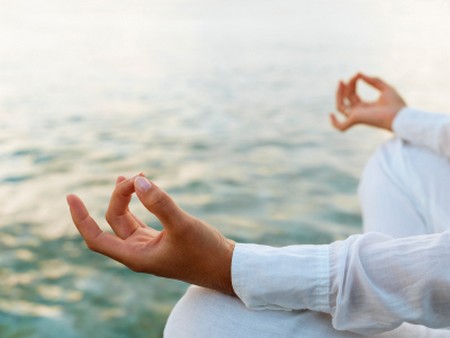Best Way to Reduce Stress through Meditation
Meditation has been practised for thousands of years by those searching for spiritual enlightenment, but one of the main reasons for its popularity today is that a proven side-effect is a marked improvement in both mental and physical health. Above all it is an effective antidote to stress.
Dubbed ‘the relaxation response’, meditation has been found to stem the flow of stress hormones and produce a response that is the reverse of the fight-flight, or stress, response. Regular meditation is accompanied by a significant decrease in heart rate, lowering of blood pressure, a calming of the nervous system and an improvement in all kinds of stress-related disorders such as depression, migraine and insomnia.
The beauty of meditation is that it is easy to learn and you can do it anywhere and at any time. All you need is ten minutes in a quiet place where you will not be disturbed, once or twice a day. First thing in the morning, when your mind is uncluttered by the events of the day, is the ideal time to meditate, but you can meditate at any convenient time. For lasting results you need to practise regularly, preferably daily.
If possible, remove shoes and loosen any tight clothing before starting to meditate. Factors common to all the techniques are:
Posture
A stable posture in which you can sit securely and keep still comfortably for ten minutes – or more if you wish to meditate for longer – with your spine straight but relaxed, is the foundation of meditation. The classic meditative posture is the lotus position, in which the legs are folded over one another. Alternatives are the half lotus or the ‘perfect posture’, but many people are more comfortable sitting in a simple cross-legged position on the floor, with a cushion beneath them for support, or kneeling. If none of these is comfortable for you, lie flat on the floor in the ‘corpse position’ and meditate in that position or sit upright on a straight-backed chair with your feet flat on the floor and your lower legs perpendicular. By holding any of these postures steadily your breathing will become steadier, your mind will become quieter, and meditation will happen more easily.
Meditation focus
Most forms of meditation involve focusing attention on a particular object, image or sound – for example, silently repeating a mantra, gazing at a candle, concentrating on the space between your eyebrows or simply observing your breath as it comes in and goes out. Other kinds of meditation involve an opening out of attention, becoming aware of whatever is happening both internally and in your external surroundings, and just being in the moment, allowing thoughts to come and go without interference.
Attitude
When people complain that they cannot meditate, this is usually because they get caught up in all the thoughts and feelings that keep rushing around in their minds and then try forcibly to suppress them. Instead of worrying about thoughts and images that arise during meditation, simply notice them without comment and gently bring your attention back to the focus of your meditation.
Categories
Advertisements
Recent Articles
 How to Understand Bed Sizes – A Small Guide
How to Understand Bed Sizes – A Small Guide How to Select Some Must Have Kitchen Accessories
How to Select Some Must Have Kitchen Accessories Best Way to Change a Car Tire
Best Way to Change a Car Tire Best Way to Write an Affirmation
Best Way to Write an Affirmation Best Way to Take Charge of Your Financial Life
Best Way to Take Charge of Your Financial Life Best Way to Survive a Party When You Don’t Know Anyone
Best Way to Survive a Party When You Don’t Know Anyone Best Way to Stop Self Sabotaging Yourself
Best Way to Stop Self Sabotaging Yourself Best Way to Start Journal Writing
Best Way to Start Journal Writing Best Way to Speak with a Powerful Voice
Best Way to Speak with a Powerful Voice Best Way to Simplify Your Life
Best Way to Simplify Your Life Best Way to Respond to a Put-Down
Best Way to Respond to a Put-Down Best Way to Reduce Acne Breakouts
Best Way to Reduce Acne Breakouts Best Way to Recover from Dining Disasters
Best Way to Recover from Dining Disasters Best Way to Quit Your Job Gracefully
Best Way to Quit Your Job Gracefully Best Way to Make Your Own Website
Best Way to Make Your Own Website



Leave a Reply